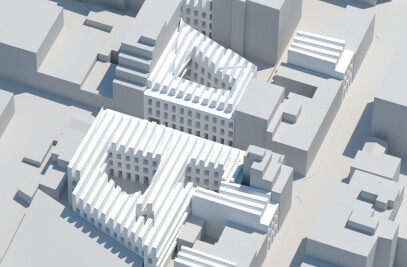This master-planning and landscape design study for Fingal County Council, Dublin, Ireland, addresses transformation of closed and capped landfills. The study proposes to turn the now-closed Dunsink Landfill into a civic place where visitors are exposed to multiple ecosystems and the history of the site. As an ecological and educational mechanism and a public amenity, the project proposes a new idea of civic space, where the effects of the city on the countryside are understood. New circulation systems, habitats, and activity areas diversify the site.
Numerous techniques connect the place to its context. Hedge rows, the traditional means to divide agricultural land in Ireland, surround the landfill site. These hedgerows not only indicate parcels and ownership, but also function to break the harsh Irish winds. New hedgerows extend across the landfill to both divide the large site and break the wind to create various environmental conditions. Vast patches of local plants like heather, gorse, beech trees, sitka spruce, vetch, and birch, create a diverse composition of color when in bloom. Formed topography retains water on site in natural storm water treatment areas. Variety in environmental conditions breeds various local ecosystems.
The master plan situates research space, offices, exhibition space, restaurant, and parking so that they create a link between the park, its immediate context, and transportation networks. Recreation activities are designed in relation to the larger circulation networks and ecosystems, producing varied environments and relationships.

































